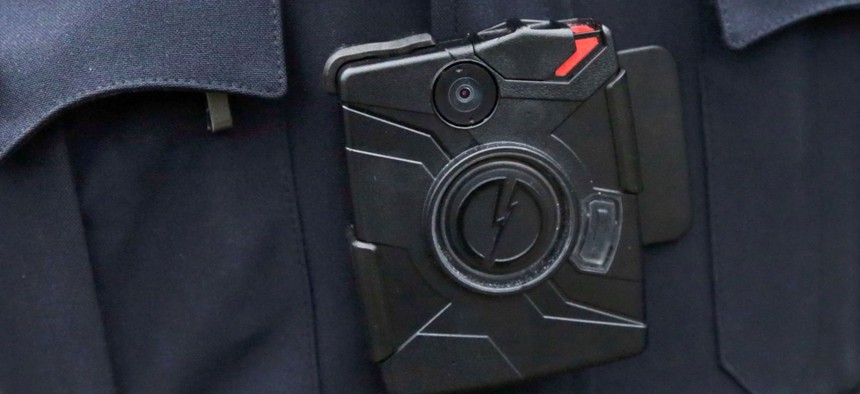Largest Body-Camera Supplier Is Giving Police Free AI to Analyze Crime Footage

Jim Mone / AP File Photo
The CEO of Taser International, now renamed Axon, says these connected systems would allow police to spend more time doing their jobs, rather than paperwork
Taser International, the company most associated with electrical weapons used by police, is adopting the freemium business model of Silicon Valley. It has renamed itself Axon, the name of its body camera cloud storage and analytics platform, and plans to give away its cameras and services for a year in hopes of persuading more police departments to eventually pay for its enterprise system for cataloging and analyzing camera footage. Down the line, Axon envisions an automated system of police reports derived from cataloging and analyzing footage from the body-worn cameras.
CEO Rick Smith says these connected systems would allow police to spend more time doing their jobs, rather than paperwork, with the added perk of installing accountability into every interaction the police have with the public. The future of police work, Smith says, is a technologist’s dream, with cameras automating menial tasks like note-taking and report-typing, so police can interact with the public more effectively.
“Eighty percent of American cops go out on the job with a gun, but no camera,” Smith says. “We want to accelerate the adoption of this technology. We think it’s wildly accepted by all sides of the political spectrum, that cops with cameras are good for society.”
Taser International, the company most associated with electrical weapons used by police, is adopting the freemium business model of Silicon Valley. It has renamed itself Axon, the name of its body camera cloud storage and analytics platform, and plans to give away its cameras and services for a year in hopes of persuading more police departments to eventually pay for its enterprise system for cataloging and analyzing camera footage. Down the line, Axon envisions an automated system of police reports derived from cataloging and analyzing footage from the body-worn cameras.
CEO Rick Smith says these connected systems would allow police to spend more time doing their jobs, rather than paperwork, with the added perk of installing accountability into every interaction the police have with the public. The future of police work, Smith says, is a technologist’s dream, with cameras automating menial tasks like note-taking and report-typing, so police can interact with the public more effectively.
“Eighty percent of American cops go out on the job with a gun, but no camera,” Smith says. “We want to accelerate the adoption of this technology. We think it’s wildly accepted by all sides of the political spectrum, that cops with cameras are good for society.”
Taser International, the company most associated with electrical weapons used by police, is adopting the freemium business model of Silicon Valley. It has renamed itself Axon, the name of its body camera cloud storage and analytics platform, and plans to give away its cameras and services for a year in hopes of persuading more police departments to eventually pay for its enterprise system for cataloging and analyzing camera footage. Down the line, Axon envisions an automated system of police reports derived from cataloging and analyzing footage from the body-worn cameras.
CEO Rick Smith says these connected systems would allow police to spend more time doing their jobs, rather than paperwork, with the added perk of installing accountability into every interaction the police have with the public. The future of police work, Smith says, is a technologist’s dream, with cameras automating menial tasks like note-taking and report-typing, so police can interact with the public more effectively.
“Eighty percent of American cops go out on the job with a gun, but no camera,” Smith says. “We want to accelerate the adoption of this technology. We think it’s wildly accepted by all sides of the political spectrum, that cops with cameras are good for society.”
Dave Gershgon is an artificial intelligence reporter for Quartz, where this article was originally published.
NEXT STORY: State Officials Question Benefits of Federal Election Oversight





